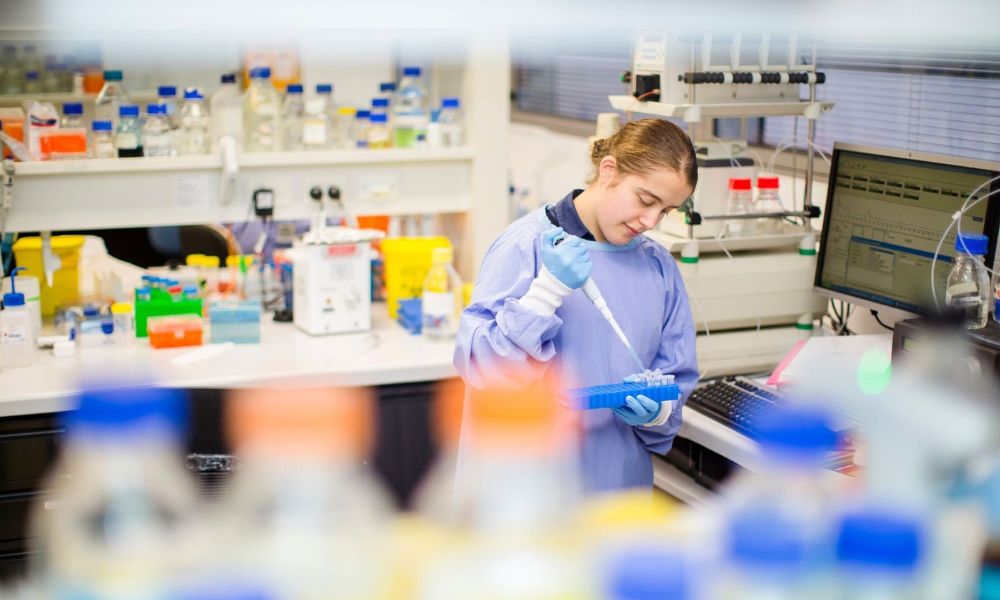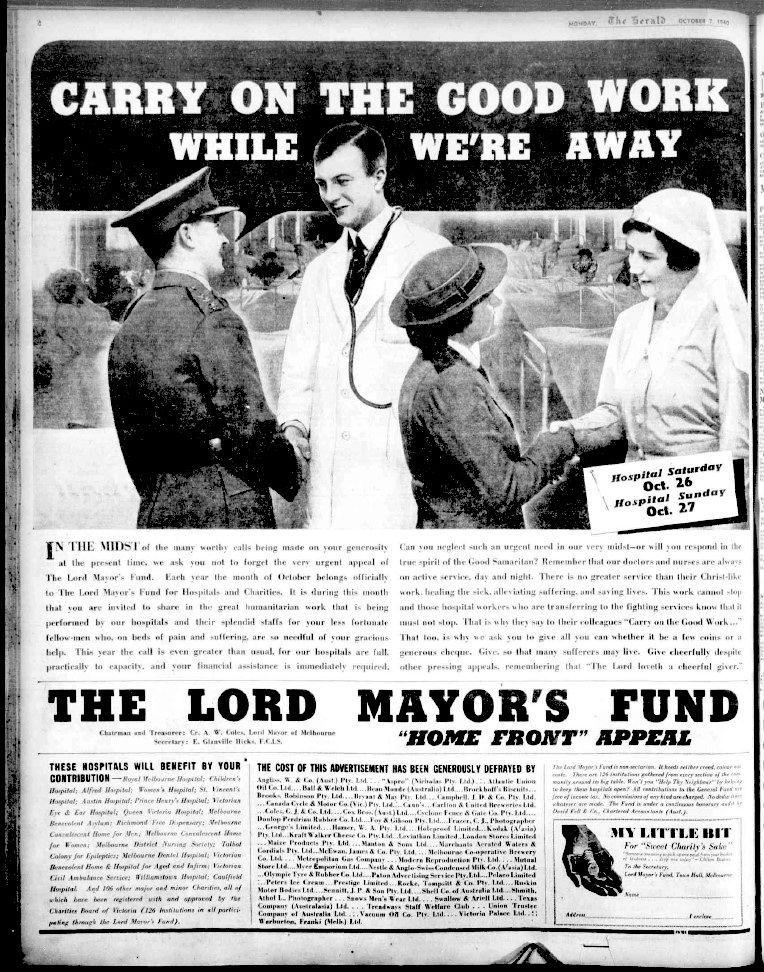Responding to Melbourne’s Healthcare Challenges
Melbourne hasn’t stayed still for long. But Lord Mayor’s Charitable Foundation has kept apace.

During the COVID-19 pandemic, the Foundation made some rapid response grants, including to the Alfred Hospital to trial treatments for people who were immunocompromised such as older people and people with HIV AIDS.
When Lord Mayor’s Fund for Metropolitan Hospitals and Charities, now Lord Mayor’s Charitable Foundation, was established in 1923, public hospitals as we now know them today didn’t exist. Back then, public hospitals relied on the philanthropy of wealthy patrons and public fundraising appeals to pay for their running costs. And paying for medical care at a hospital simply wasn’t an option for many.
"Many people just couldn’t afford to pay for hospital care," says the Foundation’s current CEO, Dr Catherine Brown OAM, who has been at the helm for 12 years. "I think that’s what [founder] Lord Mayor Sir John Swanson was most concerned about. And to this day, everything we do comes back to that – overcoming disadvantage. We’re always looking to the most disadvantaged groups and seeing how we can facilitate opportunities.
"If you look at the Foundation’s beginnings, it was innovative from the start. So, we have to keep up that approach, to carry on that legacy."
Dr Catherine Brown OAM
A hundred years ago, Australia was in the midst of a demographic shift. From a population of under five million, over 400,000 men and women had enlisted in the First World War (WWI) – including around 40 per cent of men aged eighteen to twenty-four. In the months and years after the war, those battle-weary survivors returned, carrying horrific traumas, both physical and mental. With the public’s charity diverted to the war effort and healthcare costs rising due to inflation and demand, Melbourne’s overcrowded, under-funded public hospitals were struggling.

A 1940 ad in The Herald newspaper for The Lord Mayor's Fund 'Home Front' Appeal. The Appeal notes that the 'hospitals are full, practically to capacity'. SOURCE: Lord Mayor's Charitable Foundation Archives. The Herald, 7 October 1940, p4.
The Lord Mayor’s Fund was right there at the forefront of these challenges, shoring up funding for struggling hospitals and making healthcare accessible to as many people as possible. ‘[The Fund] seeks to ensure to our sick and suffering the best and most up-to-date treatment possible,’ read an early flyer. This galvanised generous Melburnians, who were increasingly viewing healthcare as a right rather than a privilege.
In the 1930s, as the century’s challenges continued, public health and the Foundation developed in tandem. But Melbourne was feeling the effects of the Great Depression, with national unemployment peaking in 1932 at a staggering 32 per cent. Infectious diseases once again saw hospitals under strain.
That year, The Age reported that a diphtheria outbreak was causing overcrowding in the Foundation-funded Queen's Memorial Infectious Diseases Hospital in Fairfield, with the chairman of the Health Commission, Dr E Robertson, attributing the spike to economic distress and overcrowding in homes. In the same year, the diphtheria–tetanus toxoid (dT) vaccine was rolled out to schools in the country’s first community immunisation program.
Dr Robertson’s recognition of the relationship between community poverty and pressure on hospitals is an early example of the holistic approach that has driven the Foundation’s ethos.
"It’s always been about seeing where the next big health or community challenge is coming from," says Catherine. But these challenges are increasingly interconnected – economic opportunity impacts health, as do education and the environment. "We used to calmly think, What issues are Melburnians facing today?" says Catherine. "If the answer was, say, homelessness, or unemployment, or the environment, we’d work on funding those. Now, it’s a far more dynamic environment. So, we have to be nimble and proactive."
By the 1970s, changes in the healthcare system – including the introduction of Medibank (a precursor to Medicare) – meant that hospitals were increasingly funded by state governments, and no longer reliant on fundraising appeals. The Foundation had long supported causes outside healthcare, but the systemic changes to healthcare funding prompted a drastic paradigm shift.
The Executive Committee decided to update the funding ratio, and from 1978, 25 per cent of the Foundation’s funding was allocated to hospitals including programs and equipment government funding wasn’t covering. The remaining 75 per cent went to a diverse range of charities.
This sometimes meant the allocation of grants to causes that other philanthropic funders had shied away from. For example, in the early 1990s, amid the moral panic and stigma of the AIDS crisis, the Foundation supported non-government organisations helping those with the virus. With funding from the Foundation, the Australian AIDS Fund (Victorian Division) provided HIV-positive men, women and children with accommodation and services across Melbourne.
During the COVID-19 pandemic, the Foundation made some rapid response grants, including to the Alfred Hospital to trial treatments for people who were immunocompromised such as older people and people with HIV AIDS.
Post-pandemic, Melbourne faces new challenges, from mental health and chronic illness like hyperlipidaemia (high cholesterol), to our early understanding of long COVID.
The Foundation works in four key Impact Areas: Inclusive, Sustainable Economy & Jobs; Healthy & Climate Resilient Communities; Homelessness & Affordable Housing; and Generous Melbourne (charity sector capacity building). Each of these key areas affects the health and wellbeing of people and communities in different ways, but they are all intrinsically tied to the greatest challenge facing our generation: climate change.
Dr Karyn Bosomworth, the Foundation’s program manager for Healthy & Climate Resilient Communities, says that even as the Foundation’s Impact Areas have shifted and developed, the focus has remained on Melbourne’s most vulnerable people.
Philanthropy, Karyn says, plays a key role in making sure the most vulnerable and underserved have a place at the table in addressing challenges and shaping the future. "What climate change has done is show people the importance of our connections with each other," says Karyn. "The COVID pandemic also made this clear. The role of charities and communities was critical in supporting each other through an extremely difficult time. "The difference with this disaster [the pandemic] – and it is a disaster is that it’s impacting everyone and so is teaching us how important our social bonds are and how different issues are linked.
"Whether it’s a pandemic, a heatwave, a bushfire, or cost of living pressures – all these things that climate change might have an impact on – weaknesses in the systems that support us have been revealed."
As the Foundation shifts and responds to the health impacts of climate change and to other emerging health and community challenges in the ever-changing world around it, what remains is its dedication to the city’s most vulnerable.